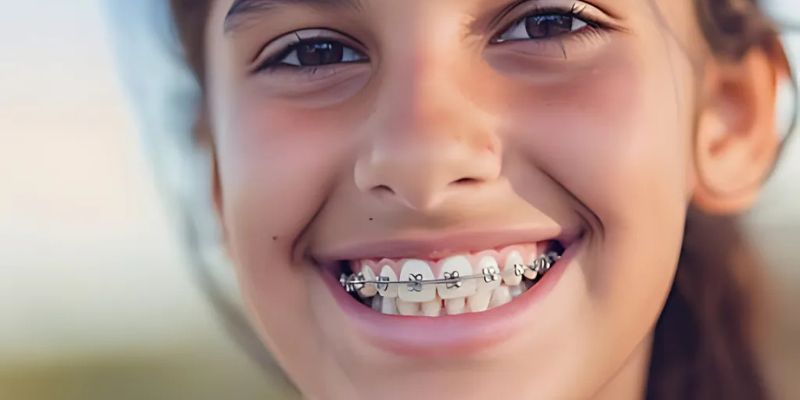Orthodontic Treatment for Kids: Causes and Symptoms to Watch For

A child’s smile is a source of pure joy, but concerns may arise when teeth appear crooked, crowded, or misaligned. But you don’t need to worry about those issues anymore. Now, there is orthodontic care, such as braces, to address these dental concerns, ensuring your child has a healthy and confident smile.
In this blog post, we’ll explore the common causes of orthodontic issues, the symptoms to watch for, and tips to support your child through the process.
What Is Orthodontic Treatment for Kids?
Orthodontic treatment is designed to correct alignment issues with the teeth and jaw. This may include braces, aligners, or other appliances that shift teeth into desired positions. Early orthodontic intervention can prevent more severe dental problems in life.
Common Causes of Orthodontic Problems in Kids
- Genetics: If you or someone in your family has had misaligned teeth or jaw issues, there’s a higher chance your child might experience the same. Genetics plays a significant role in determining the size of your child’s teeth and jaw, which can affect their alignment.
- Thumb-Sucking or Pacifier Use: While thumb-sucking and pacifier use are normal habits for young children, prolonged habits can impact the alignment of teeth and jaw shape.
- Early or Late Loss of Baby Teeth: Losing baby teeth too soon or too late can disrupt the natural alignment of permanent teeth, leading to overcrowding or gaps.
- Injuries: Accidents that impact the mouth can lead to misaligned teeth or jaw issues.
Symptoms to Watch For
Recognizing the signs early can help you decide when to consult an orthodontist. Here are some key symptoms:
- Crooked or Crowded Teeth: If your child’s teeth seem crowded, overlap, or are not growing straight, it indicates that orthodontic attention is needed.
- Difficulty Biting or Chewing: Misaligned teeth can make it hard for kids to bite or chew their food properly.
- Breathing Through the Mouth: Persistent mouth breathing could indicate issues with jaw alignment or nasal obstruction, which might require orthodontic intervention.
- Speech Issues: Problems pronouncing certain words can sometimes be linked to the position of the teeth or jaw.
- Jaw Pain or Popping Sounds: If your child complains of jaw pain or you notice popping sounds when they chew, this could signal an issue with the alignment of their jaw.
The Importance of Early Orthodontic Evaluations
Experts recommend that children see an orthodontist by the age of 7. At this age, an orthodontist can assess the teeth and jaw development to determine whether early intervention is necessary.
Early treatment can:
- Prevent more severe dental issues from developing.
- Reduce the need for extensive dental treatment in the future.
- Promote proper jaw growth and alignment.
How Can Parents Help?
Parents play an important role in their child’s dental health. Here’s how you can support them:
- Maintain Regular Dental Visits: Regular check-ups with a dentist can help catch potential problems early.
- Encourage Healthy Oral Habits: Teach your child to brush and floss regularly to maintain good oral hygiene.
- Observe and Communicate: Pay attention to any signs of discomfort or misalignment, and consult an orthodontist if you’re concerned.
- Be Supportive: If your child needs braces or other treatments, encourage them by explaining the benefits of a healthy, beautiful smile.
Looking for effective braces treatment for kids in Karad? Feel free to book an appointment with our expert at Chintamani Dental Home. We ensure your child receives top-quality care. With the right guidance and support, you can help your child achieve a healthy and aligned smile.
